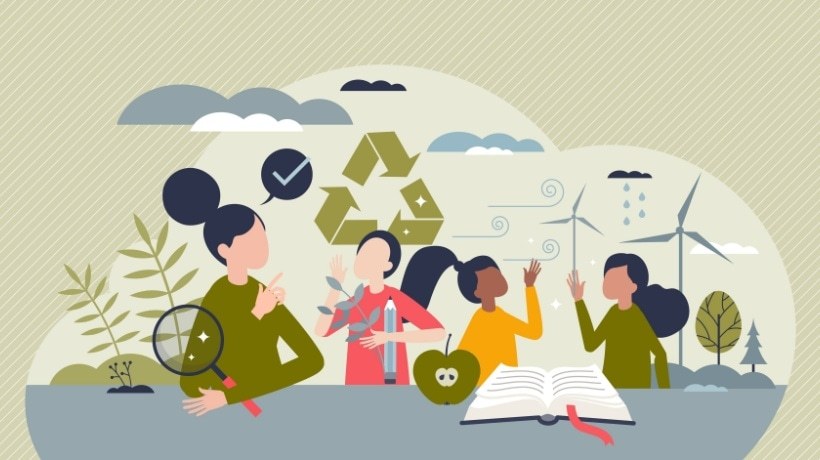How Remote Education Can Help Green Initiatives
The educational landscape is vastly different than it was a mere decade ago. Whereas remote education used to be a rare occurrence, today it’s becoming increasingly ubiquitous among educational institutions. In fact, eLearning has a wide variety of advantages that can benefit both students and teachers in key ways. Gaining a deeper familiarity with these benefits can give you a clearer picture of why eLearning is steadily becoming the most sought-after form of education. Here are the environmental advantages of adopting eLearning models.
Understanding eLearning Models
Before diving into their benefits, it’s crucial to have an understanding of what eLearning models are and how they can differ. While there are a wide variety of models that can be used, a few key models are the most popular.
ADDIE
ADDIE is an acronym for Analysis, Design, Development, Implementation, and Evaluation. While not strictly an eLearning model, this learning model lends itself well to digital interfaces and remote learning.
SAM
SAM, or the Successive Approximation Model, is another popular eLearning model found in many digital classrooms today. Essentially, this eLearning-specific model prioritizes the process of completing larger assignments and projects in smaller sections.
Rapid Instructional Design
This newer eLearning model focuses on helping students learn new concepts and information as quickly as possible. As accelerated online programs become more commonplace, this eLearning model is rising in popularity.
Ultimately, all eLearning models require students to utilize digital technology to learn. While some lessons are live, others can be asynchronous. This highlights the fact that eLearning can be changed to meet the needs of each individual student, teacher, and organization. As a result of these benefits, many schools are now feeling incentivized to take advantage of these amazing digital practices. While these various learning models can have huge educational benefits, they also have key environmental advantages as well. Exploring these can help put the amazing innovation of this new form of learning into perspective.
How eLearning Benefits The Environment
The environmental benefits of eLearning models can’t be understated. In many ways, they go beyond the educational process itself and benefit society as a whole.
Saving Money On Physical Institutions
Anyone who has ever worked in a school knows that it can be an incredibly complex and expensive undertaking. From electricity and maintenance to temperature controls, the bills can quickly add up. eLearning, however, offers a key solution to this problem. While most educational institutions currently offering eLearning programs have physical locations with classrooms, these may one day become relics of the past.
By foregoing physical locations and opting for purely online programs, schools can significantly lower their overhead costs. And, in a time where scores of public schools are underfunded, this solution could benefit everyone, from teachers and students to administrators and government organizations. In addition, teachers will still be able to play a key role in educational planning by helping to sculpt these customized learning environments. Hopefully, this type of innovation could allow schools to pay teachers higher wages and invest in more robust digital tools. Ultimately, this can result in teachers becoming more capable of performing their roles and students becoming more likely to learn effectively.
Reducing Impact On The Environment
As many have seen, sustainability has become a higher priority in society over the last several decades. As a result, more and more organizations are looking for ways to reduce their impact on the world around them and instead engage in practices that benefit the environment. When it comes to educational institutions, switching over to eLearning models can accomplish this goal. From requiring fewer materials to be used to fix campuses to reducing their carbon footprint, eLearning offers schools a way to become significantly more sustainable in their operations.
Sadly, schools use a large amount of paper each year. This, in turn, promotes the practice of decimating natural landscapes, cutting down more trees, and reducing the amount of oxygen being produced on Earth. As such, completely eradicating the need for paper across institutions can have a massively beneficial impact on the environment. In addition to these benefits, not requiring students and staff to attend in person will reduce the number of people taking transportation regularly. Ultimately, this will reduce the amount of fossil fuels entering the atmosphere in a meaningful way. Beyond these already impressive benefits, these changes can allow schools to engage in green accounting and sustainability reporting. This will help to set a precedent for all educational institutions that will eventually compound and keep all of these institutions accountable for their environmental impacts.
Though these efforts may not seem like they have a huge effect, the truth is that they could represent a huge shift in sustainable practices in the country. In other words, the more schools engage in these practices, the more significant the benefits will be to the environment as a whole.
eLearning Is The Future Of Education
While the transition into eLearning hasn’t exactly been seamless, many are now seeing the profound benefits that can come from these educational models. In particular, e-learning is a way that organizations across the world can reduce their impact on the environment and save a significant amount of money. As we delve deeper into the future, many predict that eLearning will soon become the most common form of education in the world.








